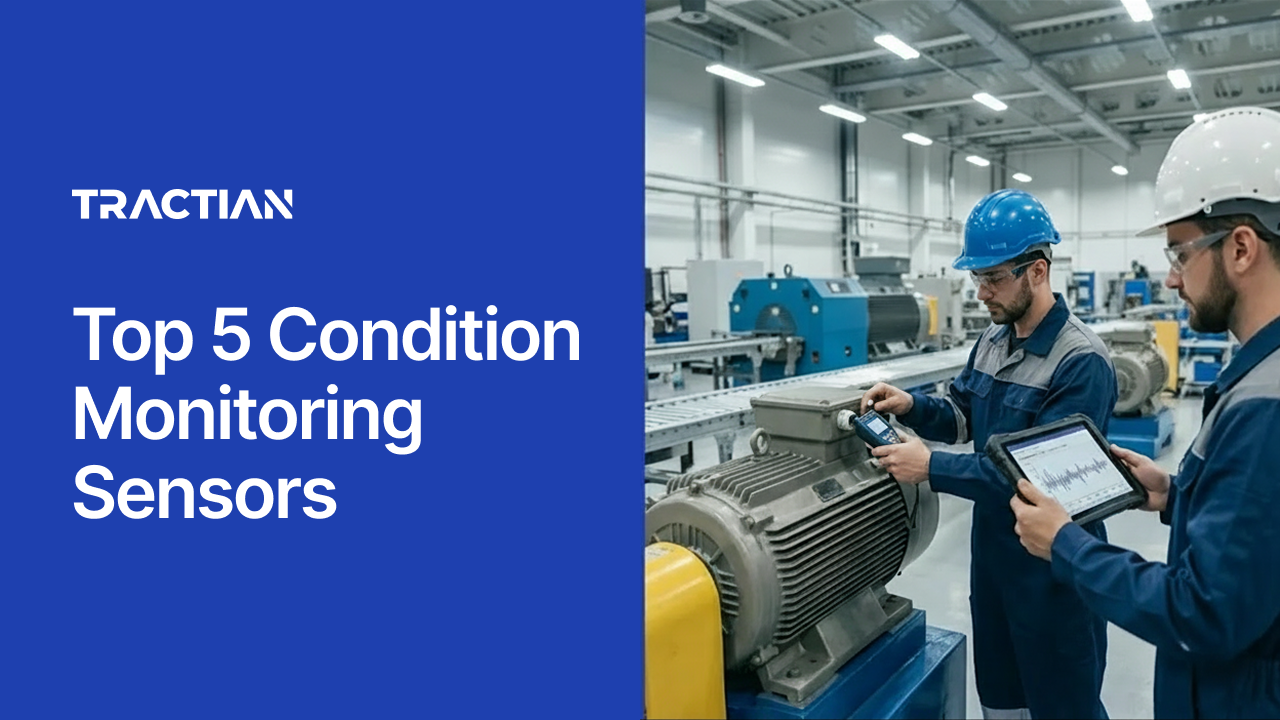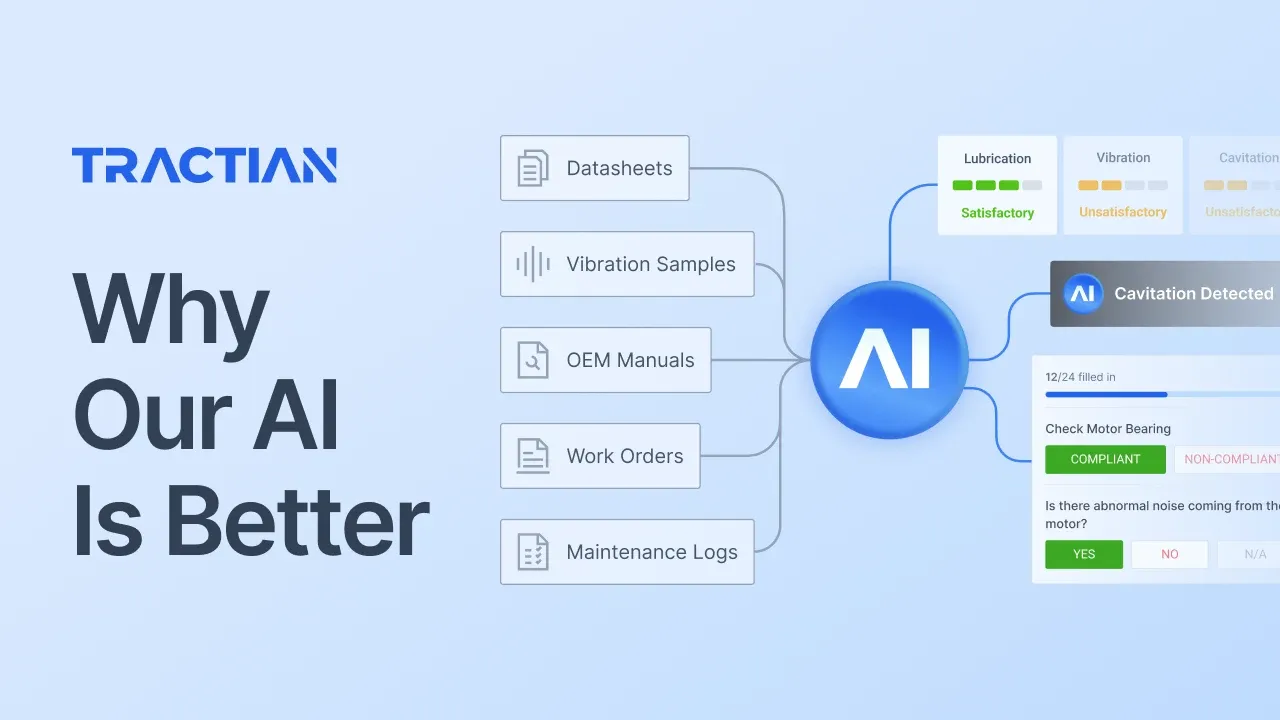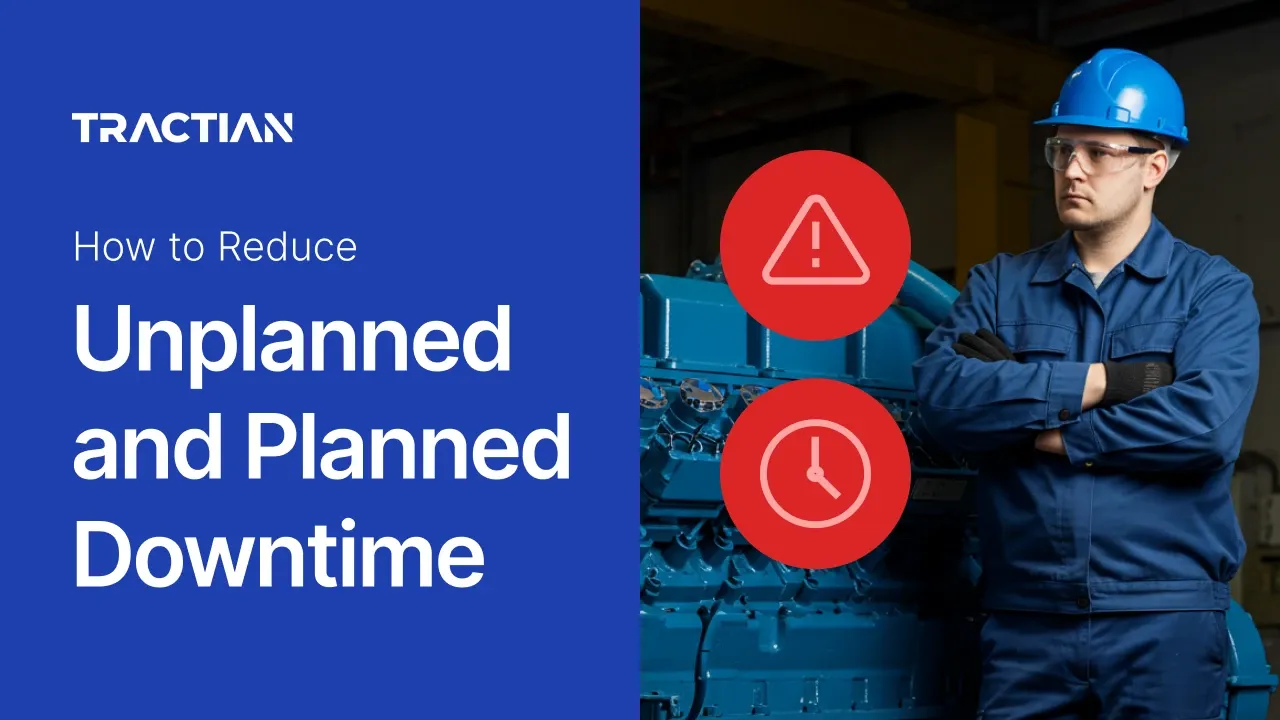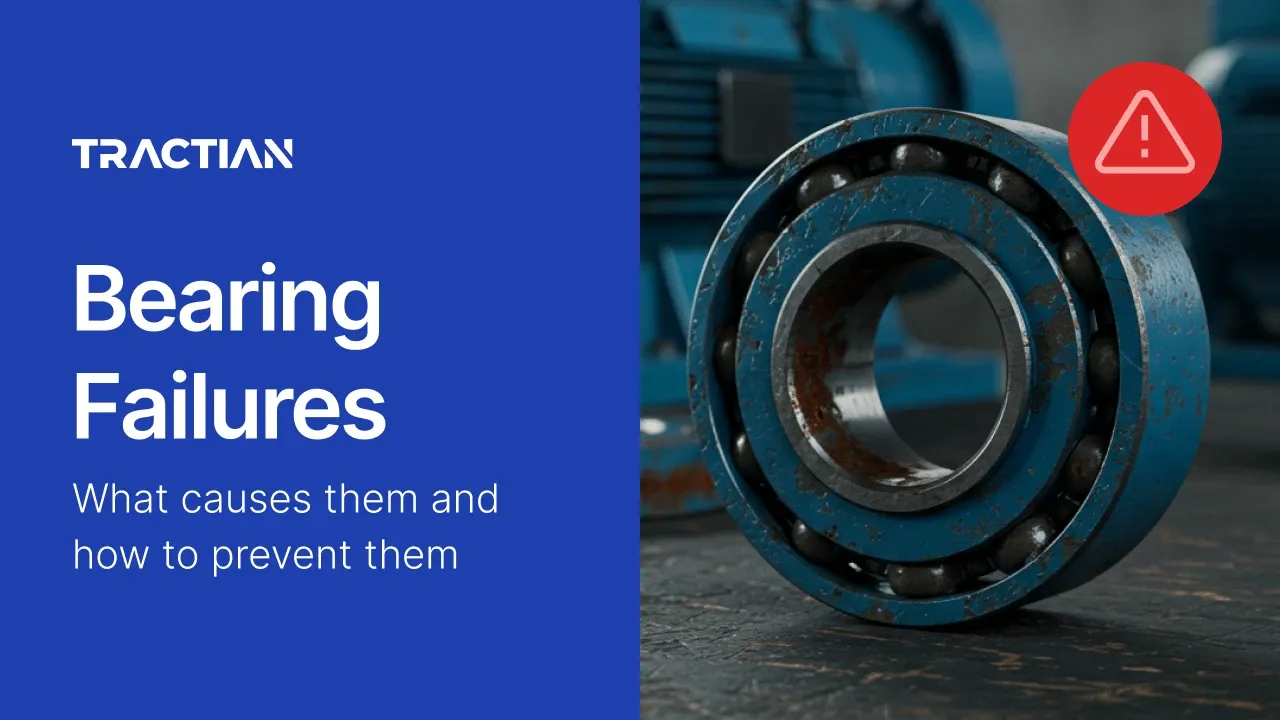
G2 Winter 2026 Reports: Tractian Sets the Standard for Asset Management & Industrial IoT
Tractian set the standard in G2's Winter 2026 Reports and continues to lead the way in connecting machine health, maintenance execution, and asset management in a single, seamless experience.
Keep readingLatest Articles

5 Best Wireless Condition Monitoring Sensors
Compare the best condition monitoring sensors in 2026 for industrial teams. Learn about features, capabilities, notable downsides, and industry fit.
Michael Smith

Top 5 Condition Monitoring Sensors in 2026
Compare the best condition monitoring sensors in 2026 for industrial teams. Learn about features, capabilities, notable downsides, and industry fit.
Michael Smith

Top 3 Fluke Connect Alternatives in 2026
Fluke Connect delivers wireless condition monitoring through the 3561 FC and 3563 Analysis Vibration Sensor systems paired with Fluke Connect software and eMaint CMMS integration. The company leverages its measurement-instrument heritage to offer vibration sensors with piezoelectric and MEMS technologies, capturing data at frequencies ranging from 10 Hz to 10,000 Hz, depending on the model. Fluke's solution combines hardware, software, and analyst services in a package that requires configurat
Michael Smith

Top 3 KCF Technologies Alternatives in 2026
KCF Technologies delivers wireless condition monitoring through its SMARTdiagnostics platform, combining high-frequency vibration sensors with multi-parameter sensing capabilities including pressure, oil humidity, and electrical signature analysis. The company's base hub aggregates multiple sensor types into an analytics layer using machine learning trained on their datasets. KCF wireless sensors offer configurable sampling rates up to once per minute, full-spectrum data capture, and battery l
Michael Smith

Top 3 Augury Alternatives in 2026
Augury delivers machine health monitoring through its Halo sensor platform that captures vibration, temperature, and magnetic field data to detect both mechanical and electrical anomalies in industrial equipment. Operating on a Machine Health as a Service model, the company deploys wireless sensors with edge computing capabilities and AI algorithms trained on extensive operational data. The platform promises guaranteed diagnostics backed by insurance coverage up to $150,000 per machine annuall
Michael Smith

The 3 Best Waites Sensor Technologies Alternatives in 2026
Waites offers a wireless condition monitoring service built around its SM6 vibration/temperature sensors, cloud software, and a 24/7 analyst team that interprets data and advises maintenance actions. The pitch centers on plug-and-play deployment, fast time-to-value, and minimal IT requirements for mid-market operations and facilities teams. That said, the platform’s current focus appears to be limited to vibration and temperature monitoring, and details about hazardous-area certifications are
Michael Smith

Top 3 AssetWatch Alternatives in 2026
AssetWatch provides an end-to-end monitoring service combining Vero® tri-axial vibration and temperature sensors with AI-powered analytics and dedicated human expertise. This is a critical part of any comprehensive, tech-driven condition-based maintenance program. Operating on a subscription model, they supply wireless sensors with cellular connectivity, cloud-based monitoring software, and assign a certified Category III vibration analyst to each client. The company promises rapid deployment
Michael Smith

G2 Fall Reports Confirm: Tractian Is the Only Unified Platform for CMMS & Condition Monitoring
Tractian has earned three G2 badges, including Leader in Industrial IoT software, and High Performer in CMMS and Asset Management
Igor Marinelli

Mean Time to Detect: A Complete MTTD Guide for Maintenance Teams
Learn how to reduce mean time to detect (MTTD), prevent hidden failures, and protect your assets with real-time insights and predictive monitoring.
Billy Cassano

Why Our AI Is Better
Every vendor in the maintenance and reliability space says their system uses AI. But that claim doesn’t mean much unless it actually takes work off your team’s plate. Here’s the reality: if you are monitoring these machines, they are most likely critical, and no matter how good these solutions claim to be, trust doesn’t come easy. Most teams still verify every alert manually with handheld tools like vibration guns or 2140s, because they’ve learned the hard way that not all insights are worth
Igor Marinelli

How to Reduce Unplanned and Planned Downtime
Learn key strategies to cut downtime, improve MTTR and OEE, and plan maintenance smarter. Discover how condition monitoring drives reliability.
Michael Smith

Bearing Failures: What Causes Them and How to Prevent Them
Learn how to identify bearing failures in industrial equipment by recognizing early warning signs, common causes, and how to prevent breakdowns.
Billy Cassano
Comprehensive free materials for your maintenance and reliability
Get free access to materials for increased productivity and an optimized maintenance routine.